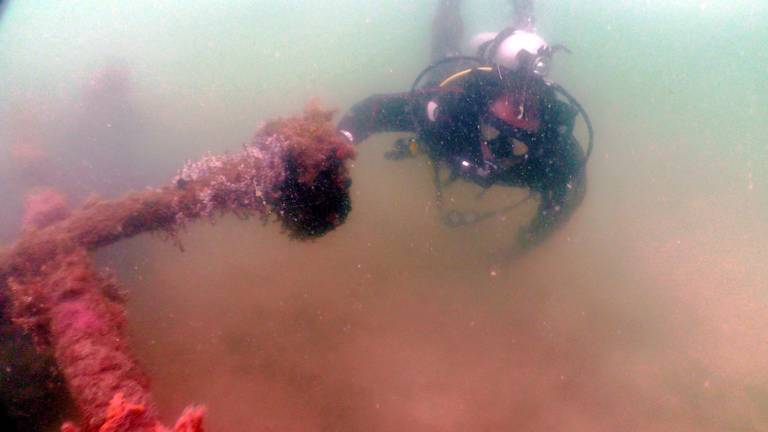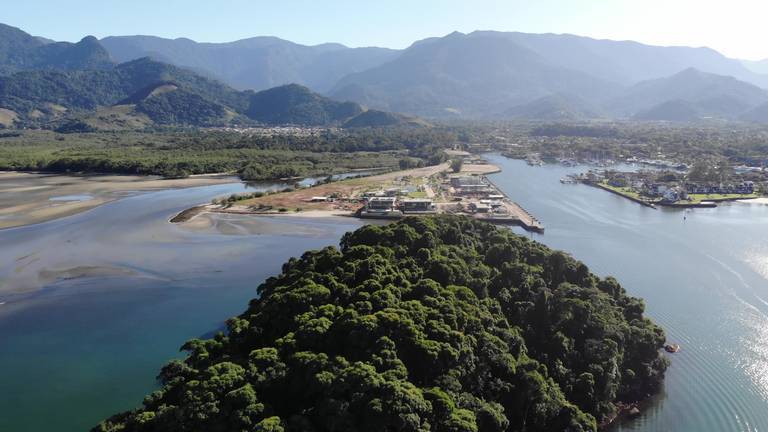Archaeologists believe the slave ship was intentionally sunk by American Nathaniel Gordon, who had illegally transported 500 enslaved people to Brazil while under pursuit.

Aventuras ProduçõesA scuba diver from the team exploring the potential wreckage of the Camargo.
Archaeologists found what they believe to be the wreckage of a ship that transported 500 slaves in the sea of Angra dos Reis, Brazil.
As the Miami Herald reported, the local Black community had long passed along the story of “The Boat,” a reef-like spot off the Brazilian coast where a great number of fish gathered and fishermen always seemed to get lucky.
Some people have also wondered if “The Boat” may have been where a boat really sank — particularly, one that may have brought their ancestors to Brazil in the first place.
As it turns out, there does appear to be wreckage at “The Boat,” and archaeologists think it may have indeed been a slave ship, one captained by Nathaniel Gordon.
“In 1851, this young captain Nathaniel Gordon from Maine was commissioned to bring the ship Brig Camargo from San Francisco to New York,” explained Yuri Sanada, founder of the AfrOrigins Institute, one of the groups working on the expedition. “Halfway, he decided to steal the ship so he could become a pirate.”
According to Sanada, Gordon sailed his stolen ship to Mozambique, where he purchased “about 490 or 500 enslaved people” before setting a course for Brazil. However, slave trading was already illegal in Brazil as of 1850. So, when Gordon docked in the bay of Angra dos Reis, the British Navy and the Brazilian Navy bore down on him, trapping him in the bay.
“After he offloaded his cargo, he decided to scuttle the ship. He set fire to the ship and made a hole in it and it sank,” Sanada explained. Gordon wanted “to erase his tracks, just eliminate all the proof by sinking the ship.”
It’s likely that the enslaved Africans who Gordon brought to Brazil were later sold to a nearby farm that had been established “to receive illegal slaves.”

Aventuras ProduçõesAn aerial view of the coastline near Angra dos Reis.
Gordon, meanwhile, remained a fugitive for a decade following the sinking. He fled Brazil dressed as a woman and stayed on the run until he was caught, once again with a large group of enslaved people, in the mouth of the Congo. He was transported back to the United States and hanged for his crimes in 1862. Curiously, Gordon was the only man in U.S. history to be executed for slave trading.
But while Gordon’s story went down in the history books, finding his lost ship proved far more difficult. That is until Sanada gathered a team of researchers to look for the 170-year-old shipwreck.
Working with the local Black community, the team determined a rough location of the wreck, then conducted sonar scans and scuba dives to find the wreckage itself. Sanada and the team believe they found the wreckage but note that mud and “very bad” visibility made it difficult to confirm the findings. They plan to return to the location in the fall to take a clearer look.
“We have lots of information from the boatyard about the Camargo,” Sanada said. This information should help them determine if the wreckage they found is the Camargo. Sanada also explained that he hoped the team would be able to find “beads from Africa or spoons from America” that can be dated to around the same time as the Camargo.
The find also carries significant importance with the local Black community, many of whom are the descendants of the enslaved Africans brought over by ships like the Camargo.

Aventuras ProduçõesTeam members and members of the local community looking for the wreckage.
As Newsweek reported, estimates state that a total of 12 million Africans were brought to the Americas as slaves — nearly half of whom were taken to Brazil from the 1500s to the mid-1800s.
“The Brig Camargo is a denunciation, in reality finding her is a denunciation that says the Atlantic Slave Trade was forbidden and Brazil allowed this slave trade,” explained Emerson Luiz Ramos, a member of the local Black community, in a translated interview.
While the AfrOrigins team is still in “the data processing phase,” continued explorations should offer more insight into the origins of the shipwreck.
After learning about this newly discovered shipwreck, learn about the Zong massacre, when slave traders drowned over 130 enslaved Africans at sea. Then, read about Cudjo Lewis, one of America’s last slave ship survivors.





